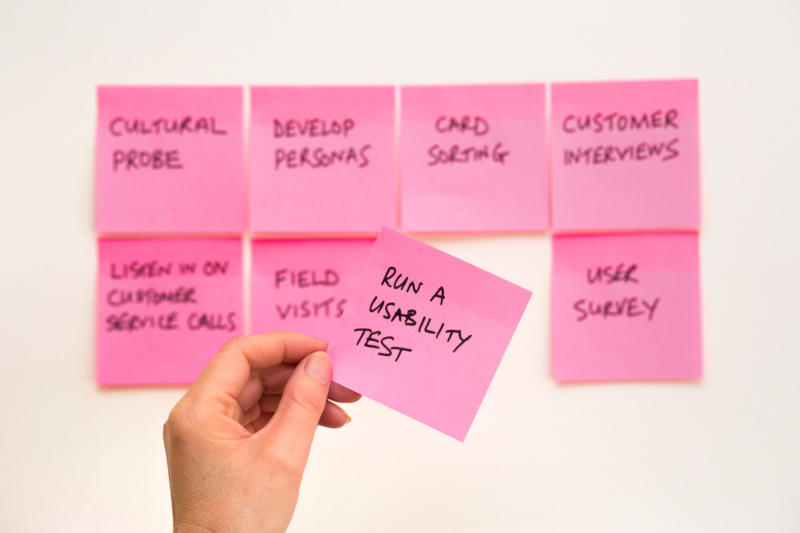Agile Product Owner - What, Why and Who is this?
The Product Owner is responsible for the Product Backlog and communicates with stakeholders and the delivery team to build a shared understanding. In this post I answer the Agile Product Owner questions: What, Why and Who.

Photo by Anastasia Petrova on Unsplash
What is an Agile Product Owner?
An Agile Product Owner is a formal role on an Agile Scrum project. The Product Owner is a visionary, industry expert and empathic listener. An effective Product Owner works with stakeholders and the delivery team to form and maintain the Product Backlog and Plan the Product Releases.
The Product Owner is responsible for the following:
- Determines the Project Vision
- Owns the Product Backlog
- Determines the Backlog Priority
- Plans Product Releases
- Communicates with Stakeholders
- Manages the Project Budget
Determines the Project Vision
The Product Owner champions the vision of the project. This vision might be something the Product Owner has come up with themselves, or they may be representing a vision from a stakeholder group. The Product Owner is the person that can give the Elevator Speech about the project.
The Product Owner uses the Project Vision to determine what belongs in the Product Backlog
- see Backlog Grooming, and to drive backlog priorities.
Owns the Product Backlog
The Product Owner writes the User Stories and adds them to the Product Backlog. An effective Product Owner does this with help from the product users, stakeholders, and the delivery team. Writing stories with good acceptance criteria is a big task. I have run many agile projects and the Product Owner is rarely able to keep up with the delivery team. A Product Owner that organizes a business value team is much more likely to keep pace. A Product Owner should be 100% allocated to a project and is fully embedded with the delivery team and Scrum Master. Ensuring alignment and providing guidance is a full time commitment to keep things running smoothly.
Determines the Backlog Priority
The Product Backlog is a list of all the features and functionality to be added to a product. This list is organized in priority order, 1, 2, 3… (Not high, medium, low - which is ambiguous). The Product Owner has ultimate accountability for the priority of the Product Backlog. Typically business value or ROI drives the priority, but other factors can play a part. High risk work or research tasks might be prioritized up the list in order to achieve more accurate project costing or to determine if outside expertise is needed on the project.
The Product Owner is free to determine the priorities in isolation, but typically this is done as an exercise with stakeholders and key users or customers. Evidence driven decisions and prioritization systems are good way to defend prioritization decisions when challenged by stakeholders or senior leaders.

Photo by David Travis on Unsplash
Plans Product Releases
With the help of the Scrum Master and the Delivery Team, the Product Owner determines a Product Release Plan.
There is a lot to say about Release Planning, but essentially, a Release is a delivery of a product increment. Once a critical mass of features has been created, the Product Owner may wish to release the product to customers. The idea behind Agile is to iterate towards a goal and to validate assumptions in the real world with real users. There is balance to strike here, between quick feedback cycles and releasing an unfinished product.
The Product Owner may wish to release to a subset of users initially, a set of early adopters that understand the release is a preview, a beta, which may not be polished.
Communicates with Stakeholders
Keeping stakeholders in the loop about the project falls on the Product Owner. Stakeholders will be interested in the overall project plan (Release Plan), the budget and current status of the project. Active stakeholders might be feeding features into the Product Backlog. These stakeholders can be part of the Business Value Team, which meets frequently, but they are likely not available for this type of commitment. The Product Owner will want to set up a recurring touchpoint with Stakeholders to keep them involved. A standard communication or simple report send after every sprint is also a helpful way to communicate with stakeholders.
Manages the Project Budget
The Project on an Agile project is managed by the Product Owner. This is tied to the responsibility for creating business value. Ideally, an agile project team stays constant so the budget burn is predictable. Using the User Story estimate Points from team Planning Poker and the team velocity the Product Owner can determine the number of sprints required to complete the project.
There are probably a lot more stories in the backlog than budget and time to complete them. Agile projects deliver incrementally, this means that every sprint delivers some small set of features and business value. The Product Owner has incredible flexibility with this model. Every sprint is an opportunity to pivot, or even halt the project and deliver what has been created so far.
Who makes for a Good Product Owner
The Product Owner role is a leadership role. It requires both vision and the ability to inspire others to buy into the vision. A subject matter expert who has lived the challenges and problems that the product seeks to solve is a great candidate for Product Ownership.
A great communicator - a significant part of the Product Owner role is getting alignment and keeping stakeholders and the delivery team aligned. Listening skills combined with a confidence to take calculated risks and experiment will drive the entrepreneurial spirit needed to succeed as a Product Owner. Trying new solutions and interpreting how those solutions are used is key to understanding user needs. A Product Owner needs subject expertise and empathy.

Photo by Mimi Thian on Unsplash
Why a Product Owner?
The Product Owner role looks a lot like a Product Manager or a Project Manager. Putting the responsibility for the budget and the product on one person helps balance the tension between these two aspects of product design. Delivery execution is primarily the responsibility of the Delivery Team with support from the Scrum Master, this frees up the Product Owner to focus on the Backlog and guide the future of the product.
There is also a tension between the Product Owner and Scrum Master. The Scrum Master protects the sprint forecast (or sprint commitment as I still call it). The Product Owner has full reign over the Product Backlog, but the Sprint Backlog determined in Sprint Planning is the realm of the team and protected by the Scrum Master. The Product Owner cannot add to the Sprint Backlog. An attempt to make any significant change to the sprint backlog results in cancelling and restarting the sprint. This is usually not worth it when a sprint is only 2 or 3 weeks long and the new hotly desired features can just be part of the next sprint.
Summary
The Product Owner role is a huge responsibility on an Agile Project. An effective Product Owner works closely with Business Analysts, Quality Assurance and the delivery to execute on their primary responsibility - the Product Backlog.
The Product Owner drives the vision for the product and communicates with stakeholders and the delivery team to build a shared understanding. Soft skills, empathy and confidence as well a a deep understanding of the product market and customer needs are key attributes of a successful Product Owner.





